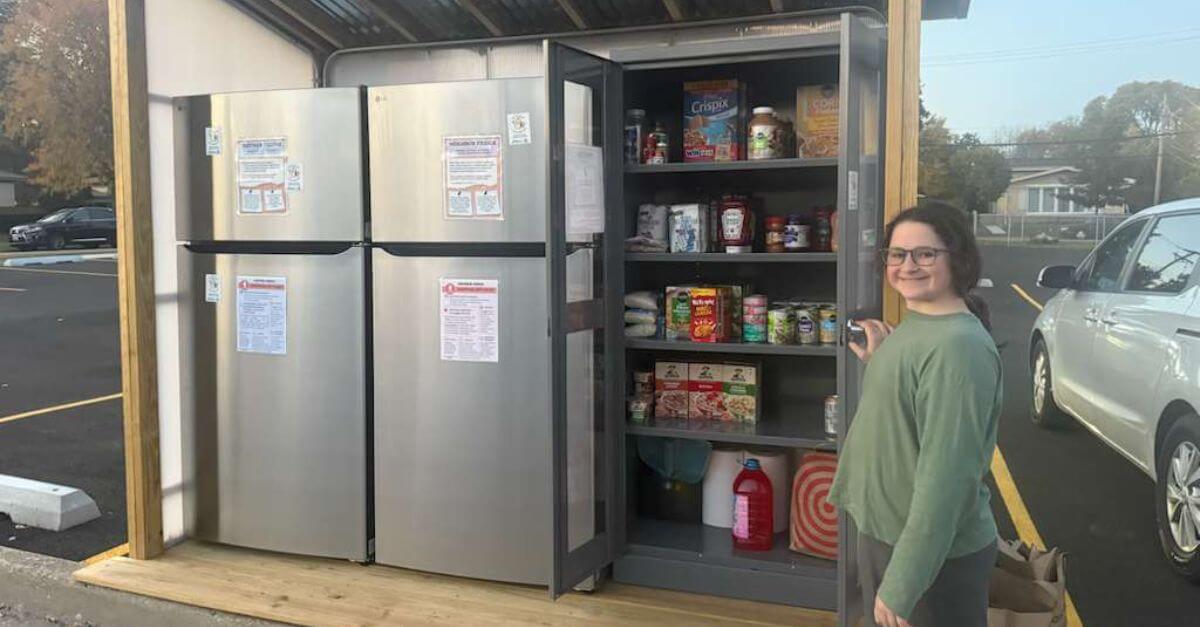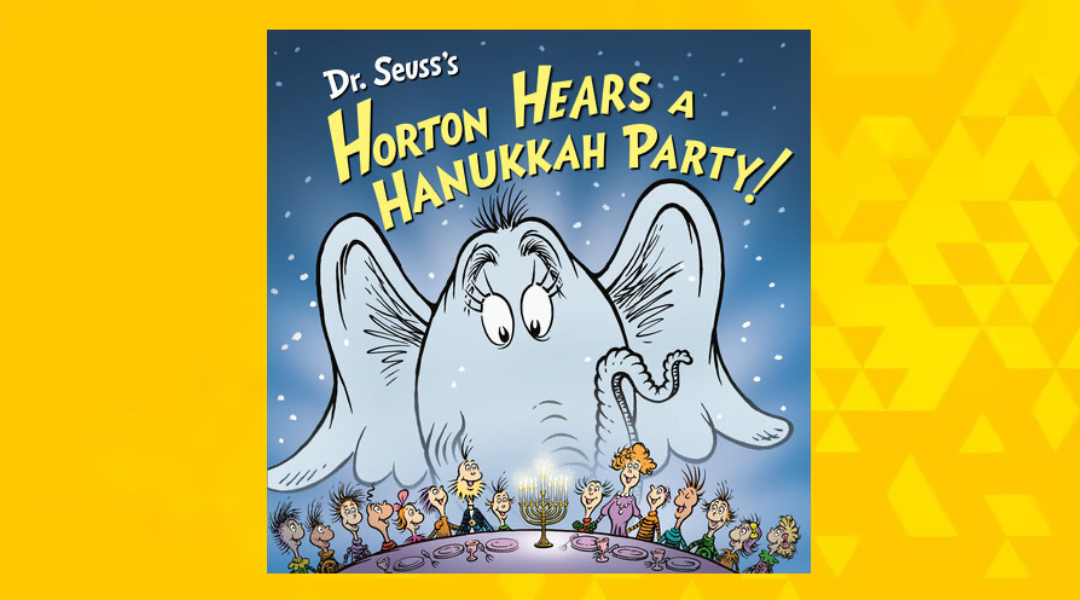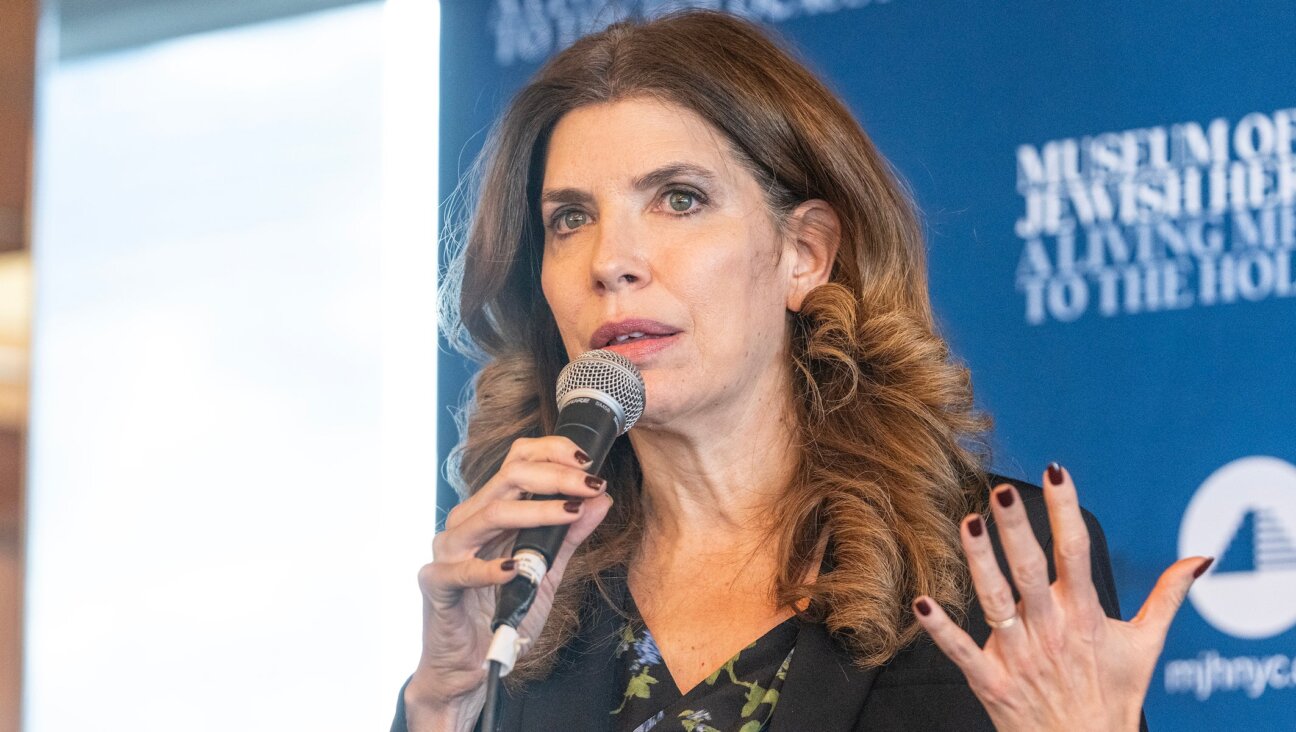Holocaust Museum Turns 20 as Sara Bloomfield Ends Controversies

Image by getty images
Two images attest to Sara Bloomfield’s success as director of the United States Holocaust Memorial Museum — one clearly visible, the other hidden from sight.
The obvious marker of Bloomfield’s success can be found daily alongside the museum’s starkly designed building, where, even 20 years after its opening, lengthy lines of visitors snake for blocks. The museum has become a must-see attraction on Washington’s National Mall.
The other sign, noticed by only those closely following the institute’s short history, is what’s missing: blaring headlines announcing new controversies about the museum’s operation.
That’s in marked contrast to the Holocaust museum’s turbulent early years. And many observers credit Bloomfield with this achievement.
Bloomfield, said Michael Berenbaum, a prominent Holocaust scholar who conceptualized and created the content of the museum’s permanent exhibition, brought “stability and leadership that were not there before.”
At the time of the museum’s 1993 opening, no one envisioned that Bloomfield, then a midlevel manager there, would one day head it, much less head it for the majority of its next two decades. An administrator whose expertise lay in operations rather than in academic research, Bloomfield lacked the name recognition of her more illustrious predecessors.
“On paper, people could say she is not the right person to run the museum,” said Deborah Lipstadt, professor of modern Jewish history and Holocaust studies at Emory University. “But what the museum needed was not a scholar but a real good administrator and fundraiser. She is a great administrator who is modest enough not to make a pretense of being a scholar.”
The museum, which is celebrating its 20th anniversary this year, was a focus of controversy even before its inauguration. Its roots lay in the decision by President Jimmy Carter to establish the President’s Commission on the Holocaust, under the chairmanship of Elie Wiesel, to recommend an appropriate national memorial of the Holocaust. The commission’s recommendation, to establish a museum in Washington, sparked heated debate. Unlike most of the other federal museums in the nation’s capital, this one would not deal with an explicit aspect of the American experience, but with an atrocity committed by a foreign nation against its own citizens and nationals of other foreign nations, and all on foreign soil an ocean away.
Nevertheless, Congress voted unanimously in 1980 to establish the museum on the National Mall, on 1.9 acres of land adjacent to the Washington Monument. And the presidentially appointed United States Holocaust Memorial Council ultimately raised $190 million from private, mostly Jewish sources to supplement federal appropriations of $53 million to make the museum a reality.
Some in the community at the time questioned whether this large commitment of funds was the best use of Jewish philanthropic resources. But time and the enormous crowds of mostly non-Jews from across the nation that have thronged the institution have pretty much settled that debate.
Since its opening, on April 26, 1993, after a dedication by President Clinton and Wiesel, nearly 35 million people have visited the museum. The institution has also won recognition as one of the world’s top Holocaust research institutes.
Bloomfield’s life story did not prepare her for the task of heading up such a morally fraught historical museum. She grew up in Cleveland with no family connection to the Holocaust. Her first encounter with anti-Semitism, she recalled in a July 12 interview with the Forward, was after graduating as an English major and teaching school children in Australia. She assigned the students a reading of Wiesel’s Holocaust memoir, “Night.” When discussing the book, she revealed to the class she was Jewish, and the response shocked her.
“They asked, ‘How can you be Jewish, because you’re so normal?’ and, ‘How can you be Jewish, because you’re so nice?’ and, ‘How can you be Jewish, because you’re an American?’” she said. A few students found it hard to talk with her after learning she was Jewish. “It was a big moment for my life,” she said, “but I don’t think that [was what] set me on a path [to] devote my life to the Holocaust.”
Bloomfield, 63, joined the Holocaust museum project in its early planning stages in 1986, and when it opened she was in charge of educational programs.
But the early years of the U.S. Holocaust Memorial Museum were characterized by high-profile fault-lines. Today, Bloomfield dismisses them as “growing pains.” Some stemmed from the inherent tensions between lay leaders and survivors, including Wiesel, on one side and the professional staff on the other. Other sources of tension were related to the difficulty the institution encountered in defining itself, both to its supporters and to the general public.
Survivors and leaders of the Jewish community viewed it primarily as a memorial to the killing of 6 million Jews and, in some ways, given the sources of its financial support, as a quasi-Jewish institution; Congress saw it as an American institution telling an American story; human rights activists wanted the museum to focus on preventing future acts resembling the Holocaust, and academics saw it as an opportunity to establish a well-funded research and archive center.
Even the issue of the museum’s schedule was contentious. To the consternation of its Jewish backers, the museum’s initial plan was to close only on Christmas Day, the same as many other institutions on the National Mall, and to remain open, as a secular American institution, on Jewish holidays. Eventually, the board agreed to also close on Yom Kippur.
Global politics also played a role, most notably in 1998, when State Department officials seeking to advance the Middle East peace process asked museum board members to invite Palestinian leader Yasser Arafat to visit the museum. It was a move supported by some as a step toward Arafat’s education and denounced by others as an effort to mitigate his image among many Jews as a terrorist motivated by anti-Semitism.
The museum’s director at the time, Walter Reich — a psychiatrist and writer on the Holocaust who was born in Poland to parents in hiding from the Nazis — objected to the invitation, while the chairman of the museum’s governing council, Miles Lerman, who was a survivor of the Holocaust and a Jewish anti-Nazi resistance fighter in wartime Poland, supported it. The invitation became a political hot potato that was revoked, reinstated and finally declined by Arafat as the furor grew.
One month later, with a push from Lerman, Reich was ousted as director.
Reich himself had taken the post in 1995, only after the U.S. Holocaust Memorial Council’s first choice, Cornell University professor Steven Katz, was forced to publicly withdraw before he took office, when The Washington Post disclosed that Cornell University had imposed disciplinary measures on him for misrepresenting his accomplishments and improperly taking a job while on paid leave from the university.
The appointment of Bloomfield, whom the Holocaust Memorial Council promoted quickly after Reich’s abrupt departure, marked the end of such public dramas. Indeed, steering the museum to calmer waters virtually defined Bloomfield’s first mission once she took over.
“The proof is in the pudding: How well is the institution run?” Bloomfield replies when asked about those who questioned her lack of professional background in the field of Holocaust research or her lack of a personal background involving the Holocaust. “I leave it to people to judge my record on what’s happened here since 1999.”
Fred Zeidman, who served as chair of the Holocaust Memorial Council from 2002 to 2010, is unreserved in his evaluation of Bloomfield’s record since her ascension. “She’s an example of choosing someone who is not from the field but ends up being the most talented one,” he said.
Overcoming internal strife has allowed Bloomfield to focus on expanding the museum’s outreach and the scope of its work. Getting visitors to enter the museum gates was never a problem, and the permanent exhibition (which has not been changed since the opening) and special exhibits have been seen widely as the best in their field. In recent years, however, the museum has increased its efforts to reach audiences outside the Washington building by developing the museum’s website as a leading global resource on the Holocaust.
Bloomfield is also working hard to add to and enhance the museum’s collection of Holocaust-related documents and artifacts. Keenly aware that Holocaust survivors, who have always been a key part of the museum’s ability to communicate its story, are now dying off, she terms this effort “now our absolutely No. 1 priority.”
“We know that when all the eye witnesses are gone, the collection will be the sole authentic witness to the Holocaust,” Bloomfield said.
The museum has also increased significantly its investment in research under Bloomfield’s direction. She negotiated the opening and sharing of Nazi-era documents from the International Tracing Service, in Bad Arolsen, Germany, helping establish the Holocaust museum as a prime resource for historians and researchers.
The conflicts that once bedeviled the museum’s dual mission — memorializing the mass slaughter of Eastern European Jewry on the one hand and serving as a research institute devoted to examining the universal problem of hate and genocide through the lens of the Holocaust on the other — have largely subsided in recent years. Bloomfield herself believes it was always a false dichotomy. The institution she heads succeeds in both paying respect to the Jewish Holocaust and provoking thought about its causes and current-day parallels, she said. Bloomfield pointed to the museum’s ongoing programs with law enforcement and military officers as a sign of its relevance in “building a moral compass” for those on America’s frontlines.
But when it comes to the museum’s lesser-known role, as a center for current-day genocide prevention, achievements are harder to find. The museum has served as the main venue for speeches, including by President Obama in April 2012, about the need to ensure that genocides do not take place. It has compiled a report detailing precursors to genocide and measures that can be taken to deal with them. But still, atrocities in Rwanda and Darfur have taken place in the past two decades with hardly any effort by the United States or the international community to intervene — a theme that is also highlighted in the museum’s treatment of the Holocaust.
“Was there any institution that succeeded in preventing genocide?” asked Berenbaum, who immediately answered his own question: “No.”
Bloomfield would not say whether she views the current situation in Syria, where more than 100,000 people have been killed in a bloody civil war, as genocide. The role of the museum when it comes to Syria and other cases of human rights abuses, she argued, is to educate, not to advocate policy. Zeidman even recalled that during his tenure as chairman of the museum, he received numerous requests regarding recognition of genocides, including one that talked about the “genocide of the unborn child.”
Of the many challenges Bloomfield has faced as director of the Holocaust museum, nothing equaled the experience of June 10, 2009. Bloomfield and Zeidman were at a meeting on Capitol Hill, when their phones rang with the notice that an armed attacker had entered the museum and shot one of the guards. They rushed back, as roads closed and police helicopters circled the museum, only to learn that special police officer Stephen Tyrone Johns had been killed while trying to stop James von Brunn, an 88-year-old white supremacist, from carrying out an attack in the museum.
“It was, without a doubt, the worst day in my career here, and probably, other than losing members of my own family, the worst day of my life,” said Bloomfield, who has since stayed in touch with Johns’s widow. Bloomfield choked up when she recalled the outpour of support from the public after the incident. “The question was: ‘Will the public show up? Will the public be scared away?’ But not only did they show up, but they showed up in extraordinary numbers, and it was a great testament to what we stand for and what this country stands for.”
Bloomfield’s latest goal is establishing a $540 million endowment fund to secure the future of the museum, which is roughly equally funded both federally and privately. In 2012, the museum received $50 million in federal appropriations and $40 million in private donations. As the struggle for federal dollars becomes increasingly tough, private donations are needed to expand the museum’s activity. Most of the donations so far have come from the Jewish community.
As for her personal future, Bloomfield has no plans for change. Colleagues and friends have noted her total devotion to the institution. Bloomfield insists that “as long as the United States Holocaust Memorial Council wants me, and I am healthy to do it, I would like to be able to serve.”
Contact Nathan Guttman at [email protected] or on Twitter, @nathanguttman














